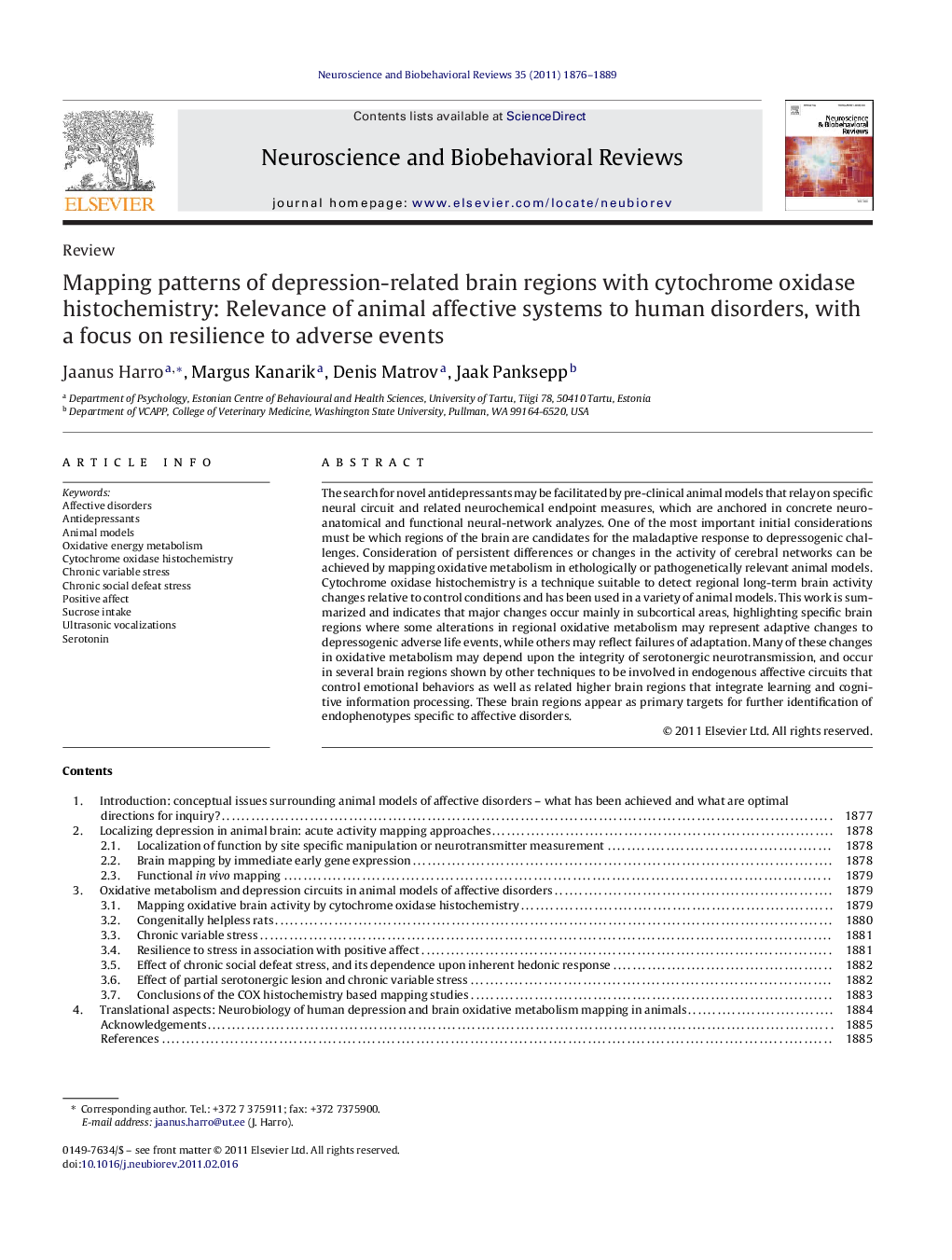| Article ID | Journal | Published Year | Pages | File Type |
|---|---|---|---|---|
| 937595 | Neuroscience & Biobehavioral Reviews | 2011 | 14 Pages |
The search for novel antidepressants may be facilitated by pre-clinical animal models that relay on specific neural circuit and related neurochemical endpoint measures, which are anchored in concrete neuro-anatomical and functional neural-network analyzes. One of the most important initial considerations must be which regions of the brain are candidates for the maladaptive response to depressogenic challenges. Consideration of persistent differences or changes in the activity of cerebral networks can be achieved by mapping oxidative metabolism in ethologically or pathogenetically relevant animal models. Cytochrome oxidase histochemistry is a technique suitable to detect regional long-term brain activity changes relative to control conditions and has been used in a variety of animal models. This work is summarized and indicates that major changes occur mainly in subcortical areas, highlighting specific brain regions where some alterations in regional oxidative metabolism may represent adaptive changes to depressogenic adverse life events, while others may reflect failures of adaptation. Many of these changes in oxidative metabolism may depend upon the integrity of serotonergic neurotransmission, and occur in several brain regions shown by other techniques to be involved in endogenous affective circuits that control emotional behaviors as well as related higher brain regions that integrate learning and cognitive information processing. These brain regions appear as primary targets for further identification of endophenotypes specific to affective disorders.
